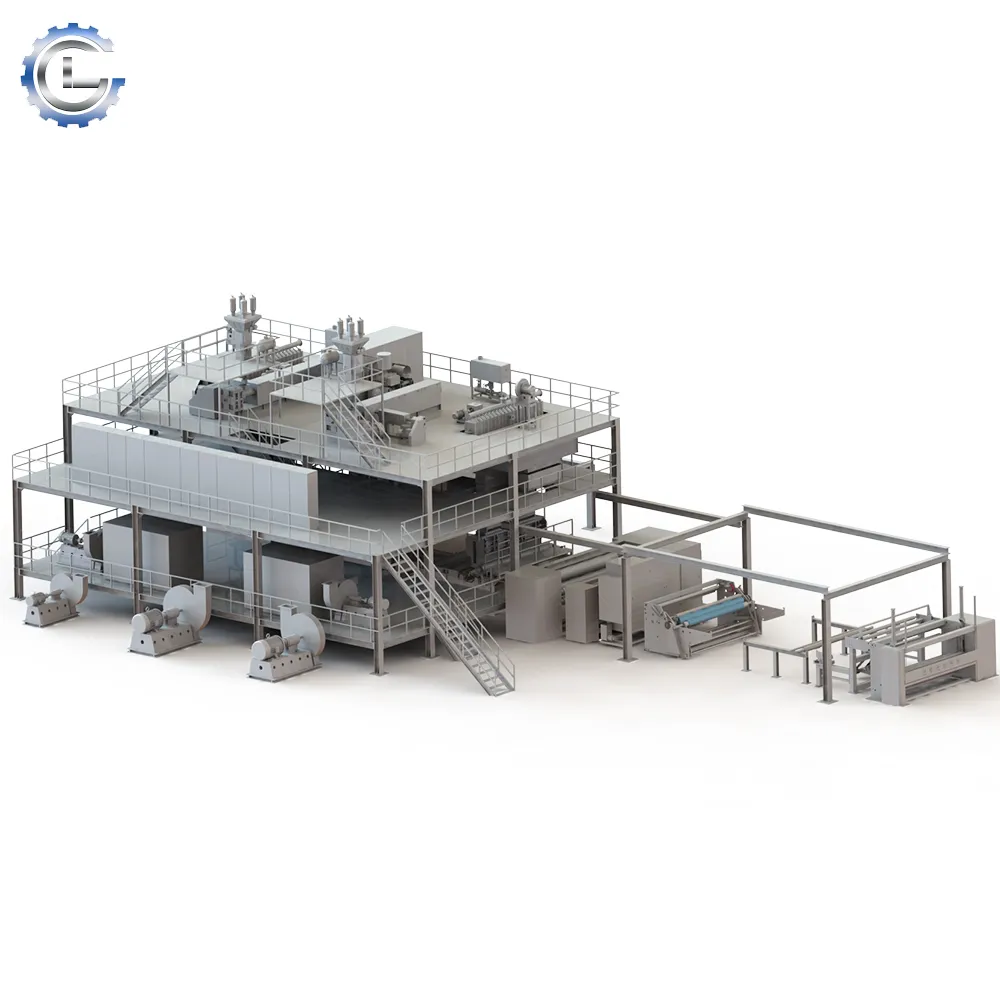في صناعة النسيج المتطورة بسرعة, أصبحت المعدات غير المنسوجة العمود الفقري لخطوط الإنتاج الحديثة. أحد أكثر الأسئلة إلحاحًا للمصنعين والمستثمرين: ما هي القدرة الإنتاجية الحقيقية لآلة غير المنسوجة? تعتمد هذه القدرة على عدة عوامل رئيسية, بما في ذلك نوع الآلة, نوع الألياف, التكنولوجيا المستخدمة, وتكوين الخط. تقوم شركات مثل Guanlong Spuntech بالابتكار لدفع حدود كل من الكفاءة والجودة.

فهم التكنولوجيا غير المنسوجة
الآلات غير المنسوجة لا تشبه على الإطلاق معدات النسيج التقليدية. بدلا من النسيج أو الحياكة, تربط هذه الأنظمة الألياف معًا ميكانيكيا, حراريا, أو كيميائيا. يمكن استخدام المعدات غير المنسوجة, على سبيل المثال, لإنتاج مواد النظافة, مواد الترشيح, أو الخلايا الجغرافية, التي يمكن إنتاجها كعناصر كتلة عملاقة بدون عمل والحد الأدنى من التكلفة.
من الإجراءات غير المنسوجة, تعتبر خطوط آلة النسيج المذابة الأكثر كفاءة في إنتاج شبكات الألياف الفائقة, التي تعتبر حاسمة في التطبيقات مثل الأقنعة الطبية وترشيح الهواء. دقتها وسرعتها لها تأثير مساهمة على حجم كبير من المخرجات.
العوامل التي تؤثر على القدرة الإنتاجية
تؤثر العديد من المتغيرات بشكل مباشر على إخراج آلة غير منسوجة:
- نوع الألياف & GSM: الألياف الخفيفة الوزن تزيد من سرعة الإنتاج; أقمشة GSM الأثقل تقللها.
- عرض الآلة: آلات أوسع (على سبيل المثال, 3.2م) توفير سعة أعلى.
- سرعة الخط: يختلف بناءً على طريقة الترابط (الرابطة الحرارية عادة ما تكون أسرع من Spunlace).
- مستوى الأتمتة: تقدم الخطوط الآلية بالكامل مثل تلك التي كتبها Guanlong Spuntech الحد الأدنى من التوقف والإخراج المستقر.
يمكن أن تنتج خطوط Spunbond الحديثة النموذجية ما يصل إلى 20-30 طن يوميًا, بينما متقدم آلة النسيج المنفوخ الذائب يمكن أن تنتج الإعدادات حوالي 500 إلى 600 كيلوغرام يوميًا من مواد الترشيح الدقيقة.
كيف Spuntech Industries Inc. يحدد معايير الصناعة
كلاعب معياري في الصناعة, Spuntech Industries Inc.. معروف بإخراجها العالي, خطوط غير المنسوجة التي تركز على النظافة. من خلال الاستفادة من التصميم المتطور والتحكم المعياري, يثبتون أن الجمع بين الموثوقة المعدات غير المنسوجة مع العمليات العجاف يسمح بإنتاج قابل للتطوير دون المساس بتكامل المواد.
في Guanlong Spuntech, نستند إلى هذه الروح المبتكرة. أنظمتنا المتكاملة يعكس القادة العالميين Spuntech Industries Inc.., ومع ذلك ، نقوم بتخصيص حلول للأسواق التي تحتاج إلى المرونة وكفاءة الميزانية.
متى يتم اختيار خط ذوبان في مهب
بينما تهيمن آلات Spunbond و Spunlace على النظافة والمنسوجات الطبية, ال ذوبان تتفوق آلة النسيج في تطبيقات التصفية المستندة إلى الدقة. إذا كنت تستهدف الطبي, البيئة, أو أسواق المرشح الصناعي, السعة المذابة أمر بالغ الأهمية.
السيناريوهات المثالية تشمل:
- N95/FFP2 قناع الإنتاج
- مرشحات الهواء من الدرجة HEPA
- مواد مكافحة الغبار الصناعية في الدقة
هذه التطبيقات تتطلب التحكم في قطر الألياف عالية الأداء واستقرار الخط-بشكل جيد ماذا Guanlong Spuntechتم تصميم حلول Melt Melt Flown.
فوائد المعدات الحديثة غير المنسوجة
- إخراج مرتفع: أسرع من العائد على الاستثمار مع 24/7 عملية الصف الصناعي
- جودة متسقة: تشكيل موحد على الويب والتحكم في التوتر
- التكامل المعياري: يجمع مع وحدات التغليف والتصفيح
- تصميم خط مرن: تبديل GSM والأنماط دون توقف
تشرح نقاط القوة هذه لماذا يستمر الطلب على المعدات غير المنسوجة المتقدمة في الارتفاع, خاصة في المناطق النامية التي تهدف إلى توطين إنتاج مواد النظافة.
لماذا تختار Guanlong spuntech?
يوفر Guanlong Spuntech للعملاء ليس فقط الآلات ولكن أيضًا القدرة على توسيع نطاق الإنتاج. إذا كنت تقوم بإعداد خط إنتاج لمنتج النظافة أو مصنع نسيج ذوبان متخصص, تجعل مجموعتنا المهنية نقطة لتخصيص التصميم وفقًا للخصائص.
نحن نوجه عملائنا على مستوى البلاد مع:
- الخدمات الاستشارية للعملية برمتها
- التدريس من خلال تدريب الآلات والتركيب
- قطع الغيار والترقيات الفنية
- نماذج تعاونية لتقليل مخاطر الاستثمار في مرحلة المراحل الأولية
تم تصميم الآلات التي ننشئها للجمع بين السرعة والدقة بحيث يمكن أن يكون كل متر من الإخراج متوافقًا مع المعايير الصناعية والتنظيمية العامة.
